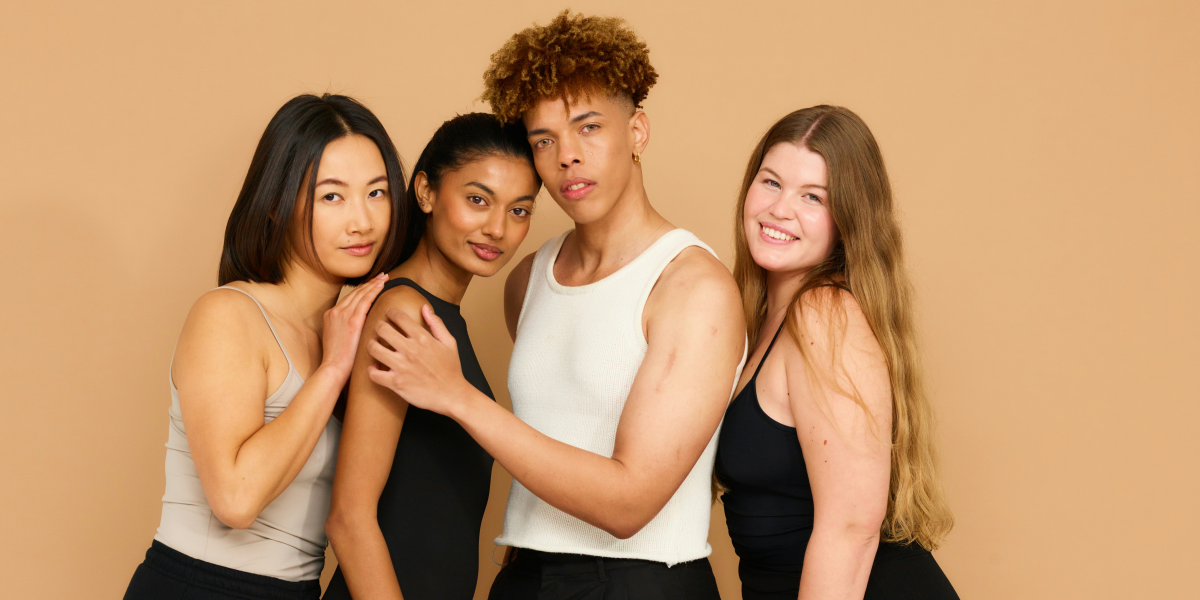The fashion industry embraces inclusivity and diversity, moving beyond trends to celebrate all body shapes, skin tones, and ages. This shift highlights a broader movement toward body positivity, emphasizing that beauty comes in many forms. Inclusivity is now a core value, not just a buzzword, shaping how brands design and market clothing. Designers and retailers focus on fit and style for all body types, with plus-size options and expanded sizing as staples. This refreshing change ensures individuals of every shape and size can express themselves, making fashion accessible and empowering for everyone.
Breaking Traditional Beauty Stereotypes
Fashion’s transformation also breaks stereotypes by diversifying representations on the runway. Traditional beauty standards—often limited to specific sizes, skin tones, and ages—are challenged by a more inclusive tapestry of models. Runways and campaigns now feature a broader range of ethnicities, ages, and body types, conveying that beauty exists in all forms. The ageless elegance trend, for example, highlights the beauty of older models, proving that style and sophistication are timeless qualities.
Authentic representation is at the forefront of this movement. Campaigns now proudly display models with scars, stretch marks, freckles, and other natural marks many people have long hidden. This celebration of authenticity resonates with audiences, helping to dismantle the unrealistic beauty standards that have dominated the industry for decades. Additionally, adaptive fashion is emerging as a crucial facet of inclusivity, with brands designing clothing to meet the diverse needs of individuals with disabilities. This adaptability ensures that everyone, regardless of physical ability, has access to fashion that fits their needs and personal style.
The Role of Social Media in Redefining Beauty Standards
Social media platforms like Instagram, TikTok, and Twitter redefine beauty standards by promoting body positivity, diversity, and self-acceptance. Influencers and everyday users champion authenticity over perfection, sharing personal journeys that embrace unique attributes. Through the #BodyPositivity movement, these platforms create a global community, amplifying voices historically excluded from beauty narratives and fostering an inclusive, accepting environment.
Embracing Individual Style and Rejecting Societal Pressures
At its core, fashion is a form of self-expression. As society moves toward a more inclusive view of beauty, there is a growing emphasis on individual style over conforming to societal pressures. Fashion has become less about following trends and more about finding what makes each person feel confident and comfortable. This shift allows people to embrace their uniqueness and find their style, whether it aligns with mainstream trends.
The beauty of personal style lies in its ability to celebrate individuality. As more people reject rigid beauty ideals, the industry is evolving to offer options that reflect a more comprehensive range of personalities, backgrounds, and tastes. This change empowers people to dress for themselves rather than adhering to a one-size-fits-all standard. By embracing their version of elegance, individuals can use fashion as a tool for self-discovery and self-expression, fostering confidence and authenticity.
Fashion as a Tool for Self-Care and Empowerment
When approached with inclusivity in mind, fashion can be a powerful tool for self-care and empowerment. Dressing in a way that feels good can boost confidence, enhance mood, and even improve self-perception. Many people find that expressing themselves through clothing makes them feel more in tune with their identity, giving them a sense of control and self-assurance.
In this sense, dressing becomes a celebration of one’s own body and individuality. Choosing pieces that resonate with one’s personal style rather than with societal expectations fosters a deeper sense of self-acceptance. Fashion is no longer simply about aesthetics; it’s about empowerment, making people feel good in their own skin, and helping them connect with who they truly are.
The Future of Inclusivity in Fashion
The future of fashion is bright, with inclusivity as a central focus. As brands and designers embrace diversity, the industry is evolving to value all bodies, backgrounds, and identities. This shift influences younger generations to develop positive self-images by seeing diverse representations in media and fashion. Growing consumer demand for inclusivity holds the industry accountable, encouraging it to expand its reach to underrepresented groups. This change promises a richer, more dynamic fashion landscape that celebrates diversity’s beauty.
Building a Lasting Legacy of Diversity in Fashion
Fashion’s journey toward inclusivity is about more than temporary trends; it’s about establishing a lasting legacy of diversity, empathy, and empowerment. As brands embrace all shapes, sizes, and backgrounds, they foster a culture of acceptance that reaches far beyond the runway. This shift creates a ripple effect, influencing media, entertainment, and society.
By redefining beauty standards and promoting authentic representation, the fashion industry can inspire people to feel seen, appreciated, and celebrated. This movement’s legacy will be a world where beauty is recognized in all its forms—a world where everyone can find their place within the fashion narrative. As we continue on this path, let’s celebrate the progress made and look forward to a future that embraces and empowers all.
Published by: Martin De Juan















